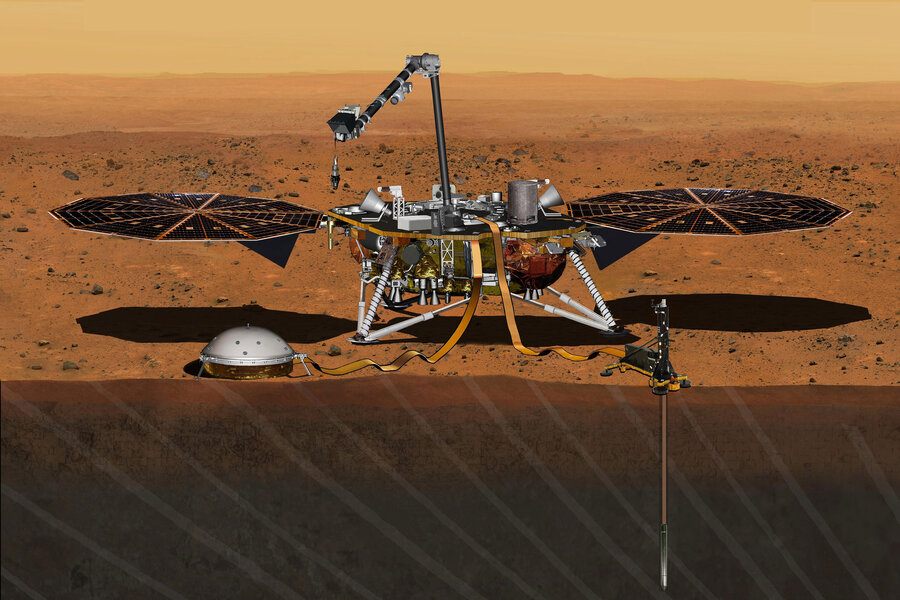Why NASA Immediately Suspended All Mars Missions
NASA took a strategic step on November 11 by pausing the transmission of commands to its Martian spacecraft, marking the initiation of a communication blackout that will extend until November 25.

This intentional hiatus is prompted by the occurrence of solar conjunction, where Mars aligns directly with the Sun from Earth’s perspective. This alignment, which happens approximately every two years, poses a challenge to radio communications due to interference from the Sun’s charged particles.
Despite the absence of new commands, NASA’s Martian rovers, satellites, and a small helicopter continue to operate based on pre-planned scientific objectives. They will actively transmit health checks during this two-week break.
For over a week, NASA has deliberately entered a phase of radio silence for its robotic missions on and around Mars, aligning with the celestial event known as solar conjunction. This strategic decision aims to preserve critical data and prevent potential mishaps during this unique alignment.
Solar conjunction occurs when Earth and Mars are on opposite sides of the Sun, rendering Mars invisible against the Sun’s glare. The celestial dance places both the Sun and Mars in the constellation Libra, creating challenges for maintaining seamless communication with robotic assets on Mars.
Ordinarily situated about 140 million miles away, Mars experiences an increased distance of approximately 235 million miles, or about 2.5 astronomical units (AU) from Earth, during solar conjunction. This elongated distance intensifies the impact of the Sun’s interference on data transmissions.
The decision to halt commands during solar conjunction is primarily attributed to the Sun’s interference. The Sun, essentially a colossal orb of interference, can disrupt the transmission of data from rovers, orbiters, and helicopters back to Earth. This interference could potentially lead to data gaps, making it a cautious move by NASA to ensure the integrity of mission-critical information.
The reverse scenario, where NASA sends commands during this period, poses a more significant risk. Confused commands, distorted by the Sun’s interference, could spell disaster for ongoing missions. Hence, the intentional suspension of commands from November 11 to November 25 serves as a preventive measure against potential mission failures.
Despite the communication blackout, NASA’s robotic assets on Mars continue their scientific endeavors. The immobile Curiosity and Perseverance rovers monitor the Martian surface, the Mars Reconnaissance and Odyssey orbiters maintain their orbits, and the Mars Atmosphere and Volatile Evolution (MAVEN) spacecraft studies the Martian atmosphere. Even the pint-sized helicopter, Ingenuity, remains active, monitoring the movement of Martian sand.
NASA emphasizes that, despite the communication blackout, mission teams have meticulously prepared to-do lists for all Mars spacecraft. Regular health checks will be performed, ensuring that, even during the blackout, NASA can monitor the state of its Martian robotic companions.
As Mars aligns directly behind the Sun, even health checks will experience a temporary blackout for a 48-hour period. The mission control teams will eagerly await the resumption of communication, looking forward to the insights and data gathered by their mechanical counterparts during this strategic pause.

Ceasefire Takes Hold: A Glimmer of Hope in Gaza
Temporary Truce Amidst Ongoing Conflict
In a notable development, a temporary ceasefire has been initiated between Israeli and Hamas forces in the Gaza Strip, marking the first respite in the 48-day conflict.
Hostage Release and Aid Delivery: Key Components of the Ceasefire
1. Hostage Release and Exchange
The ceasefire, effective at 7 a.m. (0500 GMT), is tied to the imminent release of 13 Israeli women and children held hostage by Hamas. This exchange is a pivotal element in the ongoing negotiations.
2. Additional Aid for Gaza
Simultaneously, plans are underway for the release of Palestinian prisoners in Israeli jails. Moreover, additional aid is set to flow into Gaza, addressing the severe humanitarian crisis exacerbated by weeks of Israeli bombardment.
Ground Observations: A Break from Major Hostilities
1. Significant Reduction in Major Offensives
Reports from the ground indicate a substantial decrease in major bombings, artillery strikes, or rocket attacks during the ceasefire period.
2. Mutual Accusations of Violations
Despite the temporary calm, both sides accuse each other of sporadic shootings and other violations, highlighting the fragile nature of the truce.
Shifting Dynamics: Movements and Statements
1. Israeli Tanks Withdrawal
Israeli tanks were observed moving away from the northern end of the Gaza Strip, signaling a shift in military dynamics.
2. Hamas’ Confirmation and Warning
Hamas confirmed the cessation of hostilities from its forces but warned that this was a “temporary truce,” suggesting the potential for renewed conflict.
Voices from Gaza: Hope and Resilience
1. Residents’ Response in Khan Younis
Residents in Khan Younis, a town in southern Gaza housing displaced families, cautiously ventured out of their homes, expressing hope, optimism, and pride in their resistance.
2. Call for Escalation from Hamas
Hamas’ armed wing spokesperson called for an escalation of confrontation with Israel on various fronts, including the Israeli-occupied West Bank.
Defense Minister’s Perspective: Ceasefire as a Brief Pause
Israeli Defense Minister Yoav Gallant acknowledged the temporary nature of the ceasefire, stating that it would be a short pause before the resumption of the conflict with increased intensity.
Ongoing Challenges: Cautionary Measures and Incidents
1. Warning Against Returning to Northern Gaza
The Israeli military warned Palestinians against returning to homes in the northern part of Gaza, describing it as a “dangerous war zone.”
2. Reports of Incidents During Ceasefire
Incidents, including intense shooting by Israeli forces and reported casualties, surfaced during the ceasefire, indicating the challenges of maintaining peace.
International Involvement: Concerns and Commitments
1. International Concerns and Rejections
International concern over the fate of hostages and the dire situation faced by civilians trapped in Gaza prompted the temporary ceasefire. However, Israel rejected calls for a full ceasefire.
2. Egypt’s Role in Maintaining Truce
Egypt announced its commitment to maintaining contact with both Israel and Hamas to consolidate the truce and prevent violations.
Humanitarian Steps: Hostage Release and Aid Initiatives
1. Gradual Hostage Release
The release of hostages, starting with a group of 13, is expected to continue over the next four days, with a total reaching 50. This step is crucial for building trust between the conflicting parties.
2. Aid Deliveries to Gaza
As part of the agreement, desperately-needed aid began to reach Gaza, with trucks carrying essential supplies crossing from Egypt at the Rafah border point. The aid includes fuel, cooking gas, and other humanitarian assistance.
The Road Ahead: Fragile Truce and Long-term Solutions
While the temporary ceasefire offers a momentary respite, the region remains on edge, awaiting the outcome of negotiations and the potential for a lasting resolution to the longstanding Israeli-Palestinian conflict. The next steps hinge on the delicate balance between diplomatic efforts and the realities on the ground.



